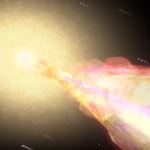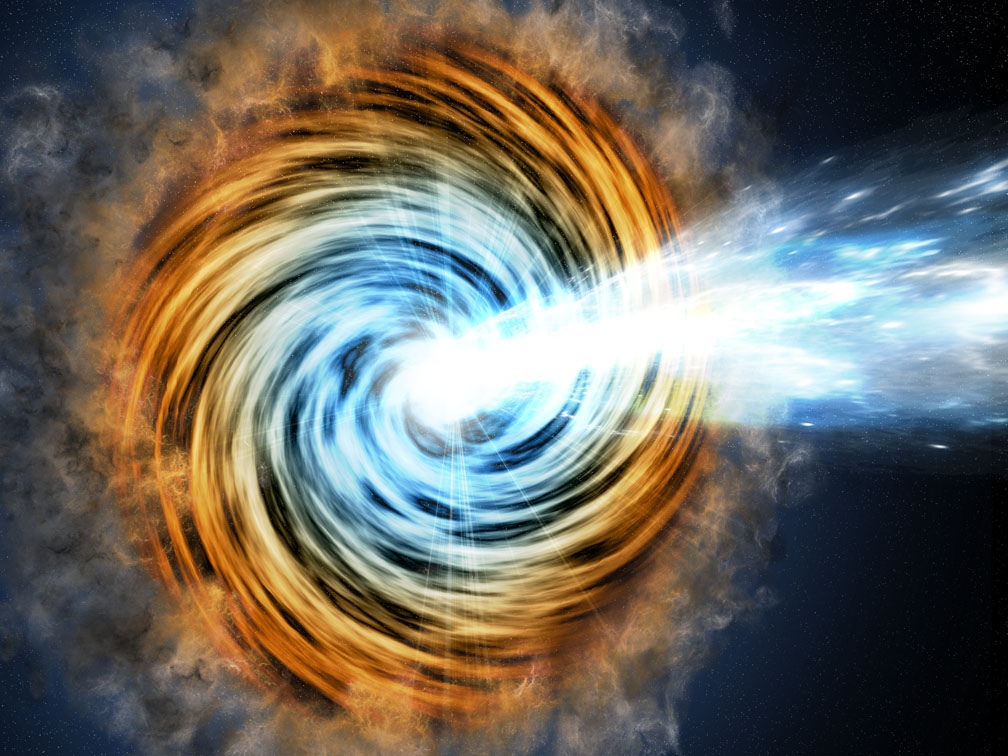Image List
-

A long time ago in a galaxy half the universe away, a flood of high-energy gamma rays began its journey to Earth. When they arrived in April, NASA's Fermi Gamma-ray Space Telescope caught the outburst, which helped two ground-based gamma-ray observatories detect some of the highest-energy light ever seen from a galaxy so distant.
NASA YouTube Video -

This artist's conception shows a blazar – the core of an active galaxy powered by a supermassive black hole. The VERITAS array has detected gamma rays from a blazar known as PKS 1441+25. Researchers found that the source of the gamma rays was within the relativistic jet but surprisingly far from the galaxy's black hole. The emitting region is at least a tenth of a light-year away, and most likely is 5 light-years away.
M. Weiss/CfA